The User-Centric Delight Audit for SaaS
- Fahad H

- Aug 27, 2019
- 17 min read
What makes people love your product so much that they want to spread the word about it?
Is it clever marketing?
No. You can have the best SaaS marketing in the world, but it won’t always turn your customers into evangelists.
Is it price? I mean… we all love a good deal.
Sure, competing on price will make the bargain hunters happy, but it’s never a good idea to race to the bottom.
Is it celebrity/influencer endorsements?
Well, your product may look cooler if Justin Bieber is slinging it, but it’s not the surefire thing that’s going to win the hearts and minds of your customers.
So… what is it?
The answer is… *drum roll, please*…
Delight.
That’s right… it’s delight.
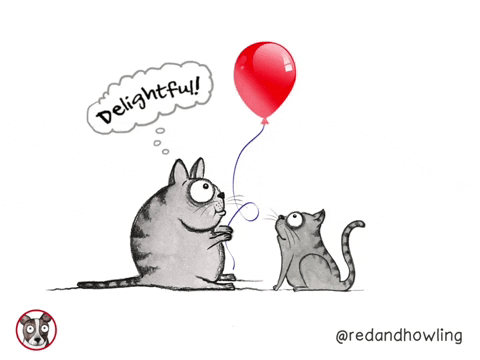
On a recent episode of the Foundr podcast, Andy Rachleff, the co-founder of Wealthfront, said delight is the secret to everything.
Including product-market fit.
“If customers are absolutely delighted by your product and the experience you give them, they’ll want to talk about it and help you achieve organic exponential growth,” he said.
Delight is a word we hear thrown around quite a bit… especially in the world of SaaS.
Inside This Post
But, um, what does ‘delight’ really mean? And how does one do delight?
Those are big questions, so let’s start at the beginning.
Nielsen Norman Group says (fairly scientifically) that delight qualifies as any positive emotional effect that a user may have when interacting with a device or interface.
Positive emotional effects, eh? Those definitely matter.
Here’s why:
Human beings are driven by emotions (and often make decisions based on them).
Establishing an emotional connection with users through delight is an easy way to add value to customer interactions. What’s more: it can help meet even deeper needs, too.
This phenomenon can be traced back to Maslow’s Hierarchy of Needs. Maslow proposed that once basic necessities are met (e.g. food and shelter), people seek deeper needs like love, creativity and self-worth.
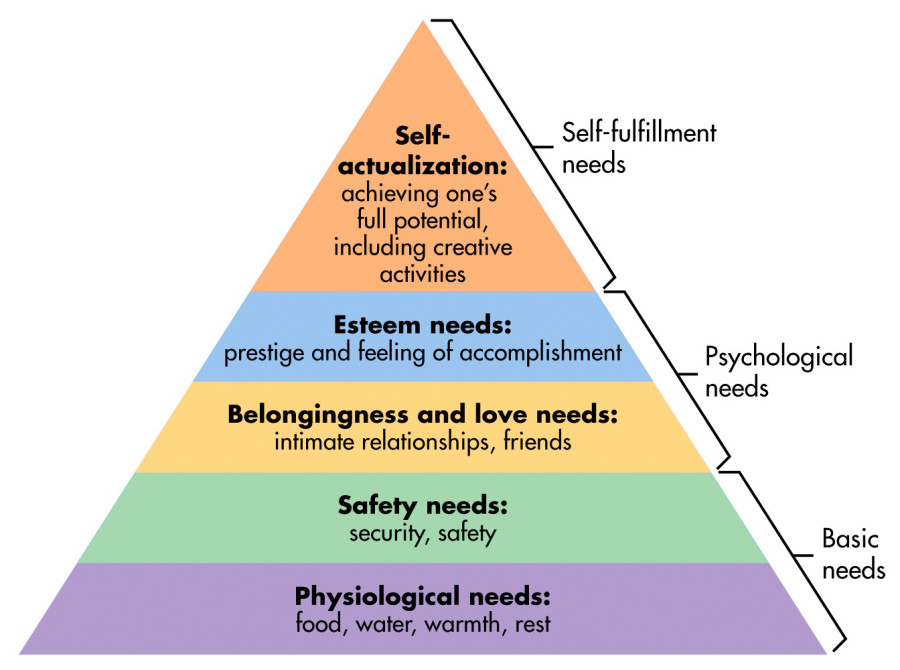
The same can be said for customer experience in the SaaS world.
After you’ve provided customers with a solution, rolling out tactics that meet deeper needs can result in that magical feeling of delight. In fact, author Aarron Walter says in Designing for Emotion that there’s a very similar pyramid in the realm of user needs with delight situated right at the peak:

And this illustrates an important truth: If you can deliver delight, you’ve got all the basics covered (and then some).
Creating something that’s as delightful as it is functional makes your product or brand irresistible.
And with countless software, apps and tools just a click away, delighting customers helps forge a psychological connection that’s both unique and significant to your long-term relationship.
Plus, when a customer is charmed by a company, and I mean I-need-to-share-this-on-Twitter-right-now charmed, it not only resonates with that particular customer, it’s also an opportunity for other potential customers to see your brand in action.
Delight also matters because…
Attention is hijacked.
Modern users have high expectations and are short on patience for the software they use. If they aren’t satisfied, they’re likely to switch to something new. Kolsky research shows 66% of consumers list bad customer experience as one of their primary reasons for churning.
There are so many options out there.
Improving customer experience can be the differentiator. Personalization is becoming the norm rather than the exception, so you HAVE to go above and beyond. Walker data indicates that customer experience is predicted to overtake price and product as the primary brand differentiator for B2B sales by 2020.
It helps in reducing customer churn and creates happy, loyal customers.
A NewVoice survey found that 50% of consumers would use a company more frequently after a positive customer experience.
Customers aren’t just making a purchase once.
In many cases (especially when a monthly subscription fee is involved), customers need to be resold and re-assured of their purchase decision every month. That outreach pays off: 11% of customer churn could be avoided if the business simply reached out to the customer, according to Kolsky findings.
If the product is optional for users, delight will help keep them engaged.
If the reality is you’ve created a vitamin instead of a cure, a delightful experience can bridge the gap between want and need. Zendesk found that 24% of buyers continue to seek out vendors for two-plus years after a positive experience.
Okay, tell me more. How do other people define delight?
It depends who you ask…
Delight is an idea that pivots on positive emotions. We can agree on that much, yes?
But for different people, it means different things. Think of this as our Billy on the Street segment where we stop people on the street and scream, “HOW DO YOU DEFINE DELIGHT?” into their faces.

Some of the answers we get to that question are:
“Surprising a customer by exceeding his/her expectations and thus creating a positive emotional reaction.” – Hrishi P
“Providing a customer with a ‘wow’ moment – something positive they didn’t expect – going that extra mile, being proactive.” – Nigel Greenwood
“It’s that extra mile you go to satisfy your customer even further beyond what’s required.” – Prathamesh Angle
Interesting, right? A lot of touchy-feely stuff about positive emotions.
But what does delight look like in SaaS, specifically?
That’s where things start to become a bit more grey.
Is it stellar customer service that goes above and beyond?
Is it in-product design that makes for an easy, enjoyable experience?
Is it sending customers unexpected freebies in their orders?
I started asking around to see how people working in SaaS would define delight.

Rand Fishkin, Sparktoro: SaaS delight is a holistic sense of product satisfaction combined with unexpected, perhaps whimsical enjoyment from the product’s features, UX, value, communication or relationships.

Ryan Smith, Bench: We deliver delight through amazing service, and to echo this, we’re always looking to add a personal touch through our content that’s, well, delightful.

Praval Singh, Zoho: For us, delight is offering a seamless customer experience from purchase to support. That’s what keeps our customers happy, and that’s where we focus our energy and efforts.
SaaS companies would say a delightful experience is one that combines personal, accessible service with unexpected joy and enthusiasm from the brand.
Ok, that’s a little more clear.
But we’re not stopping there. No, no.
As for a viewpoint on SaaS delight from those not tied to a single company, there were a few interesting takes on delight as well:

Alaura Weaver, SaaS writer: I define delight as immersing your user in an environment that speaks to the emotional outcomes you want to create for them. My research is inspired by The Dream Society by futurist Rolf Jensen, who in the 1990s predicted that technology will drive the experience economy: that is, it’s not enough to build a product that works. To stand out you need to build an emotional world for your user, and your product is simply the gateway to that world. I’m also a former theatre artist, and the element of delight is essential for winning and keeping the attention of an audience. Delight is a positive form of surprise. When you deliver an out-of-the-ordinary experience that leaves your audience happy, you’ve created delight.

Sid Bharath, SaaS Consultant: I define and measure delight by how customers react to it. For example, if you send a customer a box of donuts when they hit a milestone, are they tweeting about it? If you send them a branded T-shirt, are they wearing it and taking selfies? If there’s an extremely positive reaction to an initiative, then that’s delight – and you can measure that by the number of times it happens.
While the definitions of delight in the SaaS world vary, the big-picture translation I took away was this:
Delight encompasses those beautiful moments that make the customer go, “Oh, coooooool.”
They make the internal light bulb flip on and get the dopamine a-flowin’.
And it’s about much more than good UX.
Good UX does help improve the overall customer experience, but it’s not the only thing that can produce moments of delight.
This naturally begs the question then: “Where… or when, exactly, does delight happen?”
Glad you asked.
In SaaS, delight isn’t limited to one particular experience. Or moment. Or even realm (like product or marketing).
Instead, it’s an omni-channel experience that can happen at any and every touchpoint between brand and customer.
Think of it like this: If there’s a place where your users can interact with you in any way, there’s an opportunity to create delight.
That means there are many, many SaaS opportunities for moments of delight, including within customer interactions via:
Customer success
Website experiences
Social media
Content/blogs
SaaS onboarding experiences
Emails
In-app experiences
In-person events
Common theme I noticed here? Customers.
They’re right in the middle of everything, all across the board.
I wanted to see if this theory held up with a bit more context, though. So I started asking around for SaaS product examples that show delight in action. I found a few home runs that came in various forms and formats:
1. Wistia: The Soapbox video campaign
Wistia enlisted the help of the video experts at Sandwich to create three different video ad campaigns for their Soapbox video tool. The goal: Do an experiment around different advertising budgets for video. One video cost $1,000 to produce, one $10,000 and another $100,000.
The end result was not only a wildly amusing piece of educational content featuring their SaaS product, but it garnered tons of delight-filled customer responses. Take a look at some of the comments left on their blog post recapping the experiment:
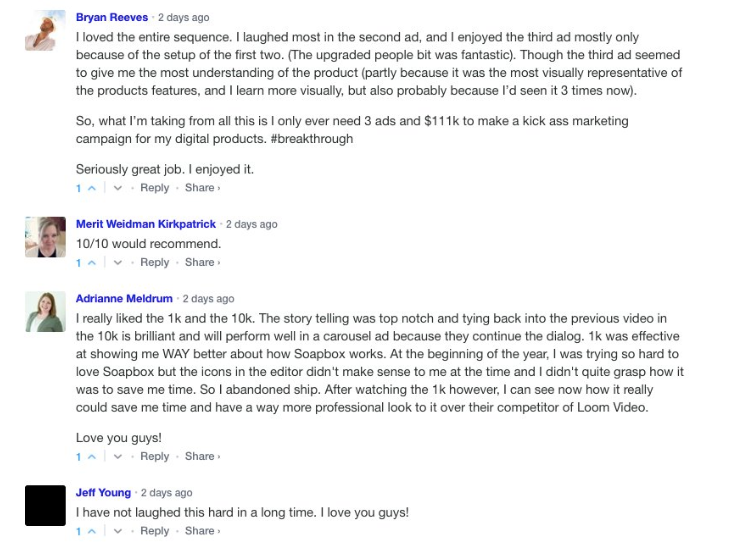
2. Typeform: Delightful microcopy
Another slam dunk example came in a much smaller package: The microcopy within Typeform’s contact form. A dash of personality in those form fields adds an unexpected element of delight. I mean, who can resist a Batman reference?
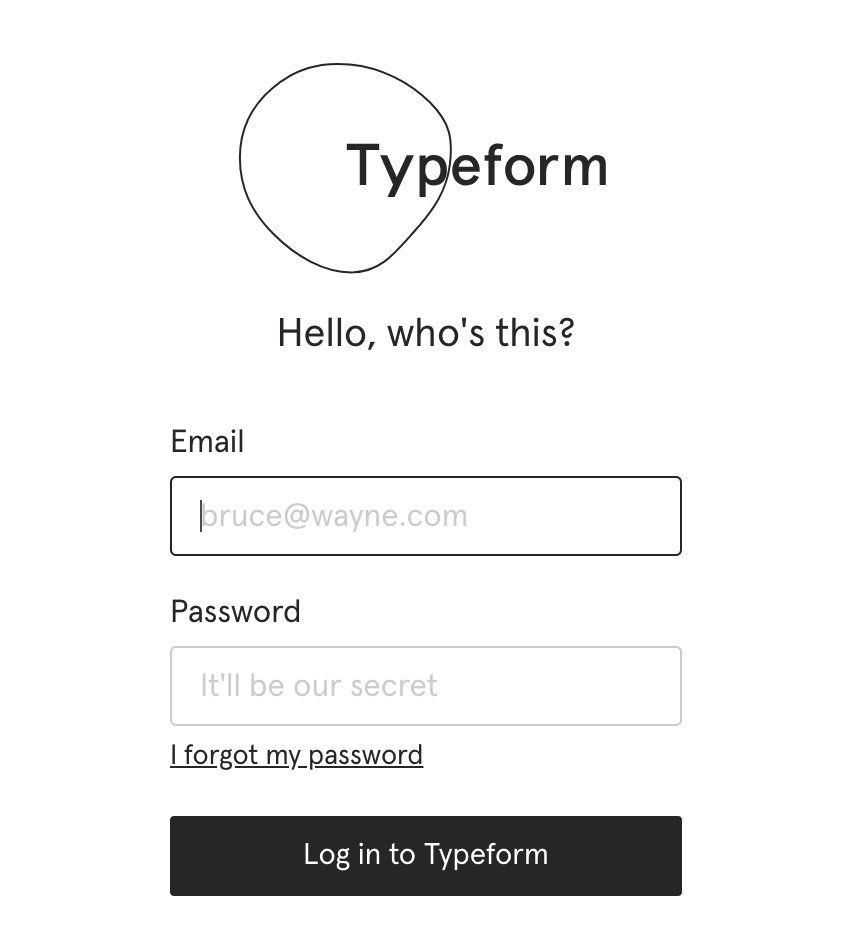
3. Flywheel: Unexpected swag
Another great example came in the medium of snail mail. One day author and online educator Paul Jarvis went out to his smailbox to discover a package from Flywheel, the SaaS product he uses for WordPress hosting. Inside the box was a boatload of free swag: branded T-shirts, a coffee mug, stickers, a journal, a water bottle and more.
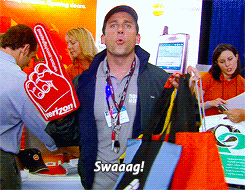
This unexpected instance of going above and beyond for a customer (for no reason other than to say thank you) created a major delight-filled experience.

And who are all of these efforts pointed at?
You guessed it: Customers. Happy ones.
Customers that are amused, pleasantly surprised and feeling all the good feels about the SaaS brand they just interacted with.
Okay, so how do we create delight for our customers?
Delight creation comes in many forms. Let’s get into the nuts and bolts of how.
Creating a “sticky” SaaS product as Unbounce calls it (in other words, something your customers can’t live without each day) is the name of the game.
You want your customers to love what your product does to help them reach their business goals, and to love to use it because the experience is so bloody awesome. Take a look at Slack’s “Wall of Love” on Twitter, for example:
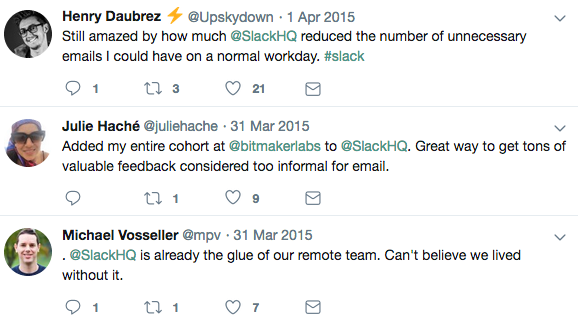
Trello also has raving fans on Twitter who tweet – unprompted – about how much they *love* using it:
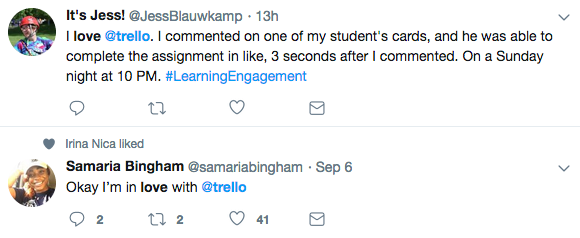
This tells us that if you don’t provide the unique and lovable experience your SaaS customers are looking for, your product just won’t make the cut.
We see this in the failure of SaaS products of the past, such as:
LucidEra, an on-demand business intelligence solution provider (replaced by more agile, cloud-based SaaS analytics software)
ChaCha, the human-guided search engine (used an advertising model for revenue generation that eventually fizzled)
Rdio, an online music streaming service (margins were too thin and users weren’t willing to pay)
Remember them? They had the right tools to help people, but they failed to delight their customers.
The “stickiness” of your SaaS product often correlates with customer churn. John Warrillow, author of The Automatic Customer: Creating a Subscription Business in Any Industry, says: “Your biggest competitor for your subscription business is not the rival service; it’s your customer’s inertia in not using your service.”
If your company is experiencing high levels of churn, Unbounce suggests looking at your product from under a customer experience microscope and asking questions like:
How does your product solve your customer’s issues?
What makes your product unique?
Why should customers choose you over your competitors?
If you have the answers to those questions already, ask your team to brainstorm around these next-level questions:
How can we add more delight into the mix?
Where does it make sense to do so?
What value would this add to the product?
By answering these questions, you can work toward reducing your time to value, which is the rate at which your customers recognize the value of your product.
Cutting down on the time it takes for new users to realize the value of your SaaS means you’re more likely to retain customers.
Why? Because so often, customers churn when they don’t have that activation moment that makes them realize they can’t live without your offering.
Keeping the customer top of mind when designing or improving a product can mean the difference between it becoming a heavy-hitter in their software arsenal (or just another product they tried).
The good news is: There are some easy ways to check and make sure that you’re integrating customer delight into everything you do.
Metrics to help measure & monitor delight efforts
Delight metrics help piece together the story of whether or not you’re actively delivering delight – and if not – why. Think of them as a finger on the pulse of your delight efforts.
But there’s no single SaaS KPI metric that measures delight. SaaS specialists like Val Geisler say measuring efforts should be holistic:
“Net promoter scores (NPS) feel like an obvious answer, but there’s more to delight than a high NPS. You also have to evaluate: Are your customers submitting tickets often? What’s the tone or category of those tickets? Are your customers referring others onto your platform? Lifetime value (LTV) is another big indicator. Take a look at your customer cohorts and LTV as well to see how long you’re retaining customers,” she said.
When evaluated collectively, all of these SaaS customer success metrics help paint the picture around how your users and customers feel about your product, your service and their experience with your brand as a whole.
Net Promoter Scores (NPS): The NPS allows companies to measure customer experience and predict business growth. This score is instrumental in determining the success of a product and helps calculate customer churn rate.
Customer satisfaction ratings: This straightforward scale rating asks customers directly, “How satisfied are you with X on a scale of Y to Z?” From product to service to experience, this question can help gauge customer satisfaction of brand performance from top to bottom and get a big picture view of different departmental efforts.
Volume of support tickets: This metric gives you an overview of your customer support demands, as well as helping to identify trends around customer inquiries and problems. If your support ticket volume is on the rise, there’s likely an underlying issue that’s getting in the way of delight.
Referrals: It’s safe to say that if a customer is referring friends, family or colleagues to you, they had a positive experience. If you notice a sudden drop off in referral traffic, this is a sign that something has gone awry.
Long-term retention/customer churn: This metric allows you to measure the lifespan of your customers. You can learn a lot from customer churn, including possible weak points with your product, issues with customer service or whether you need to reevaluate your audience targeting. If churn is high and retention rates start to drop, you need to get to the bottom of the issue.
Lifetime value of a customer (LTV): LTV allows businesses to estimate how much a customer is likely to spend on a product or service based on behavior and financial habits. This metric can help businesses calculate which customers they should invest in and which ones are expected to drop off.
Analyzing these numbers regularly can help inform how effective your company is at delighting customers. Trial and error is often required (especially in the early stages), but these metrics can help guide you when working to determine what’s working and what needs another look.
So, how often should we be looking at these SaaS metrics?
How often metrics are reviewed likely differs from company to company.
But according to Smile.io, taking a look at these metrics regularly can help you keep a finger on the pulse of your delight efforts. That might mean daily, weekly or monthly (at the very least.)
If you’re launching a new product or service, checking on these more frequently during the initial stages will help identify any red flags or issues that need to be addressed immediately. Just keep in mind that it might take a few months of customer engagement to see trends form.
And metrics aren’t the only way you can measure and monitor delight.
Listen in on social
To get a more well-rounded, all-encompassing view of how you’re doing with delight, you should also look at social media chatter. It’s important to know what are people saying about your brand on social channels like Twitter, Facebook and Instagram (to name a few.) In fact, SproutSocial has a whole list of perks that come with social listening:
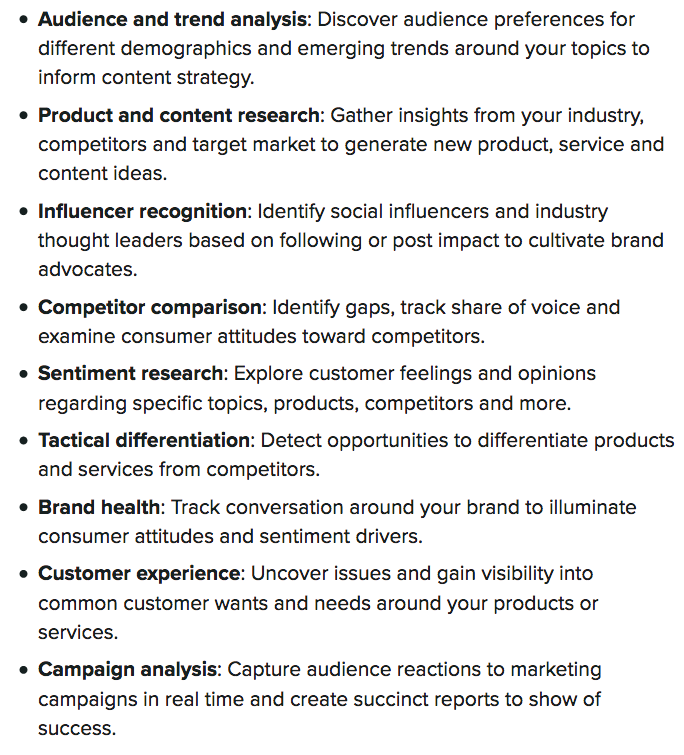
What’s more? You’ll also find out:
If people are sharing amazing customer experiences you’ve created for them
What, in particular, customers are finding “delightful” about your SaaS product
If there’s a specific activity, experience or person at your company that’s getting a lot of praise and buzz
For example: Happy customers shared their thoughts about positive experiences using Basecamp over on Twitter.

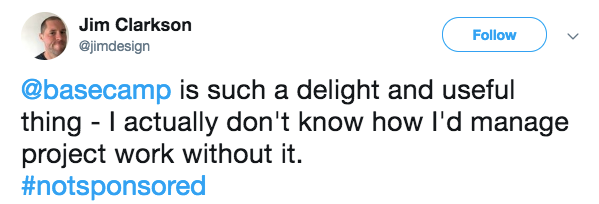
Not only is this type of social feedback great social proof for the company, but it’s also organic user-generated content that can be easily shared.
And monitoring social chatter isn’t as daunting a task as you might think as there are lots of social listening tools that can help make monitoring easy. Mention, IFTTT and Hootsuite can all help you keep tabs on not just brand mentions, but important keywords and product names as well.
Ask customers yourself
The last piece of the puzzle around measuring delight involves some hands-on work with customers: one-to-one interviews and surveys.
While looking at metrics and observing social chatter are activities you can manage from a distance, customer interviews and surveys let you get up close and personal with the people who matter most.
Through these efforts you can find answers to delight-centric questions like:
What do customers like/don’t like about your company?
What elements of the customer experience are working/not working?
Are there common points of friction or frustration that can be improved upon?
If you’re not sure where or how to start with these efforts, turn to tools like SurveyMonkey, Getfeedback or Typeform to start sending out surveys. You should also encourage your CX and/or customer support teams to conduct interviews specifically for this purpose.

Interviewing customers can also open up the conversation and help them feel at home with any suggestions they might have that aren’t options in a check yes-or-no standard survey. If they’re more comfortable with you after a conversation, their feedback could be more genuine and therefore, much more valuable to you.
By giving customers a voice and keeping tabs on how they feel about all aspects of the customer experience, you can make sure you’re always delivering delight.
SaaS companies doing delight right: The examples
A tricky thing about delight is that it’s different for each and every individual (as you’ve probably noticed.)
What if the changes you make hoping to improve CX end up really annoying your existing customers?
For example: You might switch up your user interface based on interviews and survey data and still lose customers who don’t like the new version.
These are the frustrations of delight and working to make your brand appealing to all different kinds of people. But there are brands out there that are, in the words of Tim Gunn, “Making it work.”
Let’s take a look at how some SaaS companies navigate the art of delight.
HubSpot
“One way HubSpot delivers delight to users is by creating a community for them to share and network with other professionals like them (HubSpot Blog, HubSpot Academy, INBOUND, HubSpot User Groups, etc.) By creating these communities and partnerships, we’re able to delight customers by providing them with forums to continually offer their feedback, but also to partner up with like-minded individuals they can continue learning from.” – Sophia Bernazzani, HubSpot
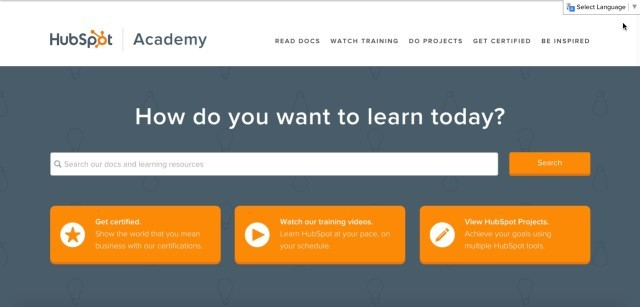
Trello
“Delivering delight at Trello is one of the highlights of my career here. We’ve been able to explore numerous avenues where we can create memorable moments along the entire user journey. Here’s an example: When you go to trello.com to sign up, you’ll notice placeholder email addresses in the email field. Those email addresses are fun references to Harry Potter, Futurama, X-Files and more.” – Brian Cervino, Trello
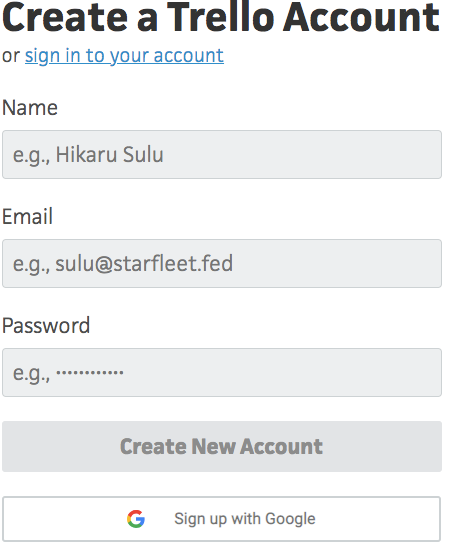
Profitwell
“Our Profitwell product manager is always in the support chat, getting to know users and finding out what their pain points are with the product right from the source. Shortening the feedback loop that way really helps to increase customer delight.” – Mary Matton, Profitwell
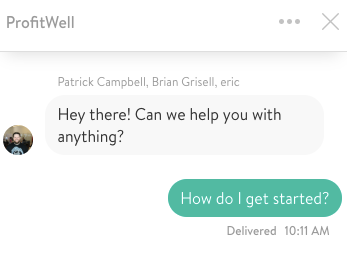
Emma
“We surprise some of our new Emma customers with a package that includes cupcakes or cupcake mix, branded wooden spoons and welcome items like a note from our team to help create a delightful experience right off the bat. It’s a nice way to reinforce our value proposition and helps show that we’re willing to go above and beyond for our customers.” – Lane Harbin, Emma
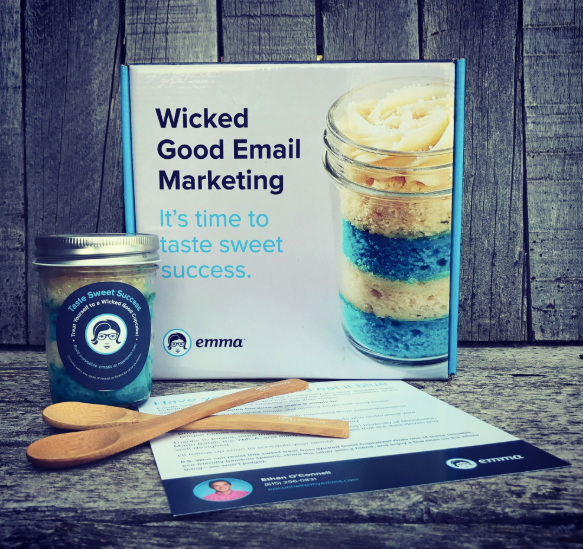
SaaS delight audit: 5 steps to create delight
By following the SaaS audit steps outlined here, you can be sure that you’re doing everything you should be to create churn-reducing, evangelist-creating delight – time after time.
Step 1: Define what delight means for your brand.
Literally… create a delight definition. Write down one to three sentences that explain what delight means at your company and then share it with your whole team. Use this definition to cement the idea of your unique version of delight and what it means for your customers. Be specific, and make sure it ties in with your brand’s mission and values.
Step 2: Define metrics and benchmark.
Select metrics that will help you measure delight, then set SMART goals around those numbers to gauge performance. Use the tools you’ve implemented to help you grab the analytics and take a hard look at what’s working (and what’s not). Then adjust accordingly.
Step 3: Start monitoring.
In order to delight customers consistently over time, you need to make sure you’re doing a good job with your efforts by monitoring them closely. Make sure that your delight activities are regular and ongoing, as this isn’t a one-and-done. Set up tools and processes that keep your finger on your company’s delight pulse and track your performance throughout the week, month and year.
Step 4: Report and share.
SaaS customer experience touches every department, so everyone needs to be in on the numbers and reporting around delight. Make it part of your company culture to talk about your customer delight findings regularly. Bonus: This helps break down silos and opens the door for cross-department collaboration and conversation.
Step 5: Innovate and improve.
Keep coming up with fresh, new ways you can delight customers over time. Brainstorm collectively and welcome interesting new approaches, rather than sticking with the ‘this is how we’ve always done things’ view. Take notes on what your competitors are doing and any instances of particularly unique or interesting approaches you notice in the wild. Delight efforts need to evolve over time, so be sure that innovation is part of the brainstorming process.
Final thoughts on delight
Customer experience specialist Alli Blum summed up SaaS delight nicely.
She explained that in the realm of SaaS software, delight feels like it’s something that customers experience as a secondary result of using a product or interacting with a company. Getting the help you need when you need it is a delight. Finding a way to do something in a tenth of the time is a delight. Feeling like you’re the company’s only customer is a delight.
That said, she also explained that delivering delight to customers is only possible if you understand who they are and what they want on a deep level.
For example: Offering customers a discount or stickers will make some people happy. But your customer might feel much more delighted if you answered their support tickets almost immediately, if you made the updates they want or if you gave them ways to promote their work and connect with others who use your product.
So what does that tell us?
The bottom line: Delight is personal. Customers are the center of delight.
It isn’t limited to in-app experiences.
It’s not just about ‘cool’ features.
It’s about putting the customer front and center at every possible interaction and giving them what they want and need – often well before they even know they want or need it.
Delight audit checklist
Initial delight brainstorming session
Bring your team together and answer these questions to assess your current delight efforts and to kick off a discussion around future plans.
How does your product solve your customers’ issues?
What makes your product unique?
Why should customers choose you over your competitors?
How can you add more delight into the mix?
Where does it make sense to do so?
What value would it add to the product?
To-do list
Next, walk through these to-do list items to make sure you have a documented strategy for delight moving forward.
Define what delight means for your brand: Write down one to three sentences that explain what delight means at your company.
Define metrics and benchmark: Select metrics that will help you measure delight, then set SMART goals around those numbers to gauge performance.
Start monitoring: Make sure you’re doing a good job with your efforts by monitoring them closely.
Report and share: Make it part of your company culture to talk about your customer delight findings regularly.
Innovate and improve: Keep coming up with fresh, new ways you can delight customers over time.
Customer touchpoints to review
Audit the following touchpoints to see where you can add delight to the experience.
Customer success
Website experiences
Social media
Content/blogs
Onboarding experiences
Emails
In-app experiences
In-person events
Metrics to study
Put together a plan for reporting on key delight metrics and a plan of action to resolve any issues that may arise.
Net Promoter Scores (NPS)
Customer satisfaction ratings
Volume of support tickets
Referrals
Long-term retention/customer churn
Lifetime value of a customer (LTV)
Social chatter
Customer interviews/surveys








Comments